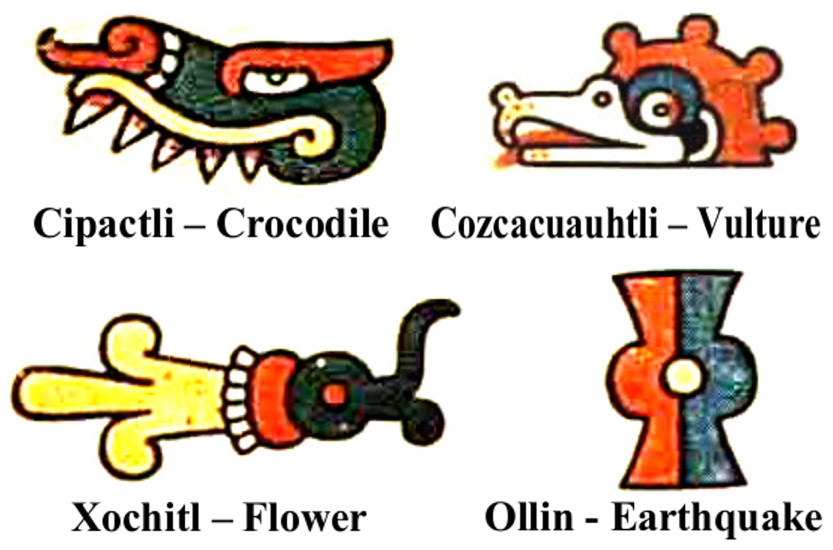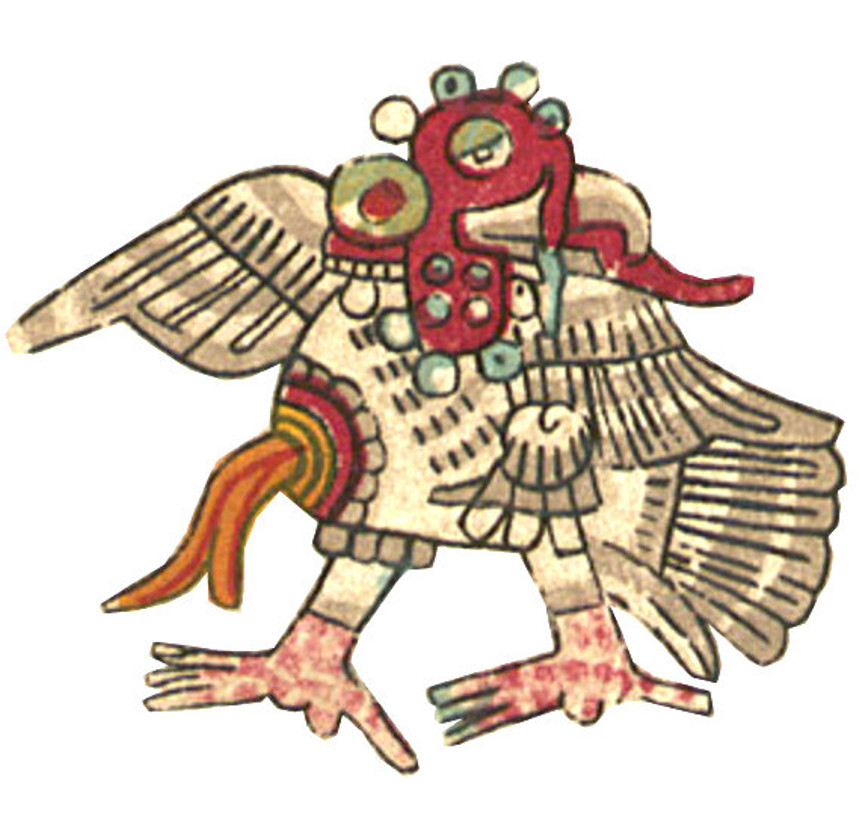(In this title, I use “Mexican” as an anachronistic term for the pre-Columbian period of Mesoamerican history and as the modern-state designation for the broader Mesoamerican area. By “connections” I intend cultural “influences” and “exchanges”—specifically with the area of the American Southeast.)
Around four years ago I posted an article entitled appropriately “Mesoamerican Influences in Mississippi” to rave about three dramatic incised shell gorgets (discs of conch shell), which I found on the internet through Google Images. They looked like great evidence of the influence of Mesoamerican cultures on the Mississippian civilization in North America’s Southeast. Perhaps two years later I received an anonymous email from an academic “enforcer” from establishment archaeology or anthropology intent on “debunking” this evidence.
With no counter-evidence, the writer denied the authenticity of the first gorget and with an almost reasonable but shaky argument refuted the significance of the second. The third gorget, a superb illustration of my point, was simply ignored. Shaken by the inquisitorial tenor of the complaint, I didn’t want to waste my time arguing with a brick wall and took the post down.
Recently I’ve been hugely gratified to find that Richard Thornton of the Apalache Foundation is continuing his ground-breaking research into foreign influences in the ancient American Southeast, including from Europe, South America, and Mesoamerica. Using DNA, physical, architectural, and sociological evidence, he has discussed migrations into the area by bronze-age peoples from Sweden and Ireland, Panoan and Arawak peoples from South America, and many Mesoamerican peoples from “Mexico.”
Mr. Thornton’s research and tribal migration legends reveal several waves of immigration as cultural groups fled from environmental degradation or from the aggression of neighbors. Many ethnic groups fled the dangers of constant warfare between Maya city-states, brutal invasions by militant Toltecs, and genocidal imperialism of Aztecs. In fact, several times over at least two millennia there was a mass exodus of refugees. Per Wikipedia, when the Toltecs invaded the area of Veracruz, most of the indigenous Totonacs fled north to Cempoala. Others continued east along the Gulf Coast, across the Mississippi River, and north into the Tennessee River Valley.
I’ve been re-inspired by Mr. Thornton’s perseverance in the face of animosity from the academic establishment—and by the recent broad acceptance of Mesoamerican inspiration for the pyramid mounds of the Mississippian civilization. (See my 1992 book about Indian Mounds and my Gallery of Indian Mounds.) As a result, I’ve decided to re-post my discussions of these three shell gorgets and let folks make what they will of this evidence of Mexican connections.
THE FIRST GORGET was reportedly found along the Tennessee River in the Muscle Shoals area of northwestern Alabama. The scholarly debunker claimed both it and its provenance were faked, but I have no reason to suspect such pointless fakery, fully accepting Mr. Thornton’s case for “Mexican” immigrants in exactly that area. From the photograph on Google images, I drew this Muscle Shoals gorget:
Having spent 30+ years with the art and mythology of ancient “Mexico,” I instantly recognized the designs in the band encircling the very Mississippian-style head. They are standard day-signs from the Aztec ceremonial calendar and virtually identical to those in Codex Fejervary-Mayer. One of the few Mexican manuscripts to survive the Conquest’s book-burning, this Codex is believed to have been created in Veracruz:

Crocodile is the first day of the 20-day “month,” and Flower is the last. I can’t say why there are two Flowers, but Vulture is the day right before Earthquake. Meanwhile, the four Earthquake signs are particularly eloquent. In “Mexican” cosmology, Four Earthquake is the day-name of the current Fifth Sun (era or world). Thus the head on the gorget is most likely that of the deity of the Fifth Sun, Tonatiuh, familiar as the face in the Aztec Stone of the Suns which is centered in the decorative day-sign of the Fifth Sun.
I still maintain that this Fifth Sun Gorget is unambiguous, conclusive evidence of Mesoamerican influence in Mississippi.
THE SECOND GORGET I again drew from a Google Image. Called simply “Muskogee Creek,” it’s a cut-out of a turkey, also from the Tennessee River Valley in Alabama.

It happens that the turkey was famously the Mexican symbol of war and military glory, like the Aztecs’ god Chalchiuhtotolin, the Jade Turkey. This gorget immediately called to my mind images of turkeys in the Codex Vaticanus and Codex Borgia (both from Puebla), particularly because of the strange protrusion out of the turkey’s breast:

I claimed this gorget as additional proof of a Mesoamerican influence in Mississippi, but my academic assailant argued that the protrusion was a natural feature of all turkeys and no such proof. Raising turkeys as a 4-H adolescent, I never saw such a feather tuft on one, but then my birds had never lived very long before being eaten. Checking internet references, I discovered that as male turkeys age, they do indeed grow a clump of slender, fibrous feathers in the center of their breasts, called a beard or tassel—the longer the beard, the older the turkey. Some, but not all, female turkeys may also grow beards.
Now (coincidentally on this Thanksgiving Day 2021), I have to thank my astute critic kindly for teaching me something new about turkeys. But confounded at the time by his or her (or gender-neutrally their?) argument, I conceded my point and dropped the subject. But now I’ve searched Google Images for other Mississippian turkey gorgets and have only found one of a pair of the iconic birds, neither of which sports a beard. Therefore I’m now reclaiming this Muskogee Creek turkey with its ornamental beard (and militant spurs) as legitimate thematic, iconographic evidence of Mesoamerican influence. Let my fowl-minded critic refute that if they wish.
THE THIRD GORGET, this one from Tennessee, presents the quintessentially “Mexican” motif of the anthropomorphic jaguar, shown here again in my drawing.

In the codices (primarily Bodley, Nuttall, and Vindobonensis–all three of Mixtec origin), there are many images of traditional Jaguar Warriors of the Night.
The artist of the Tennessee example clearly had the concept down pat but just as clearly wasn’t all that familiar with the real pattern of a jaguar’s pelt. (Nor did the “Mexican” artists manage to realistically illustrate the creature’s rows of rosette designs.) The blending of Mesoamerican and Mississippian traditions is shown by the Tennessee figure’s forked eye.
Newly convinced and content with the evidence of these three shell gorgets, I will simply declare Q.E.D. and include them in my Gallery of Pre-Columbian Artifacts.
ADDITIONAL EVIDENCE OF “CONNECTIONS”
However, still smarting from the academic antagonism directed at my original post, I want to avenge the attack by bringing forth a bit more evidence for Mesoamerican “connections” in the Mississippian area. First, let me note that several other Mississippian shell gorgets also show felines with decorative pelt patterns—surely jaguars, which by then and there must have become purely mythical creatures. A striking example is my (reconstructed) drawing of the Fairfield Gorget from Missouri (an area of many pyramid and platform mounds):

In scholarly mentions of this eye-catching piece, the figure is called a panther, but there’s no known species of such an ornately patterned feline in North America. It can only be a jaguar from Mesoamerica in a Mississippian artist’s fanciful conception.
I’ll rest my case with one more example, merely one of several possible. It’s a shell gorget from the Mississippian site of Etowah in northern Georgia (which Mr. Thornton has identified as the town of Etula peopled by immigrants from Mexico):

This image of a “falcon” warrior displays typical Mississippian details like the beaded forelock and deer-horn headdress, and holds items of debatable significance, but the wing and tail, clawed feet, and posture are standard for the traditional Mexican eagle-warrior:
Codex Nuttall Codex Vindobonensis
#



